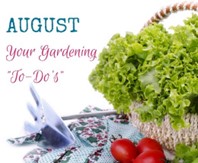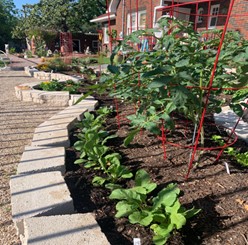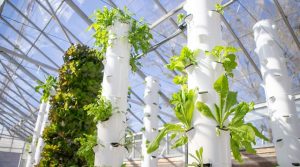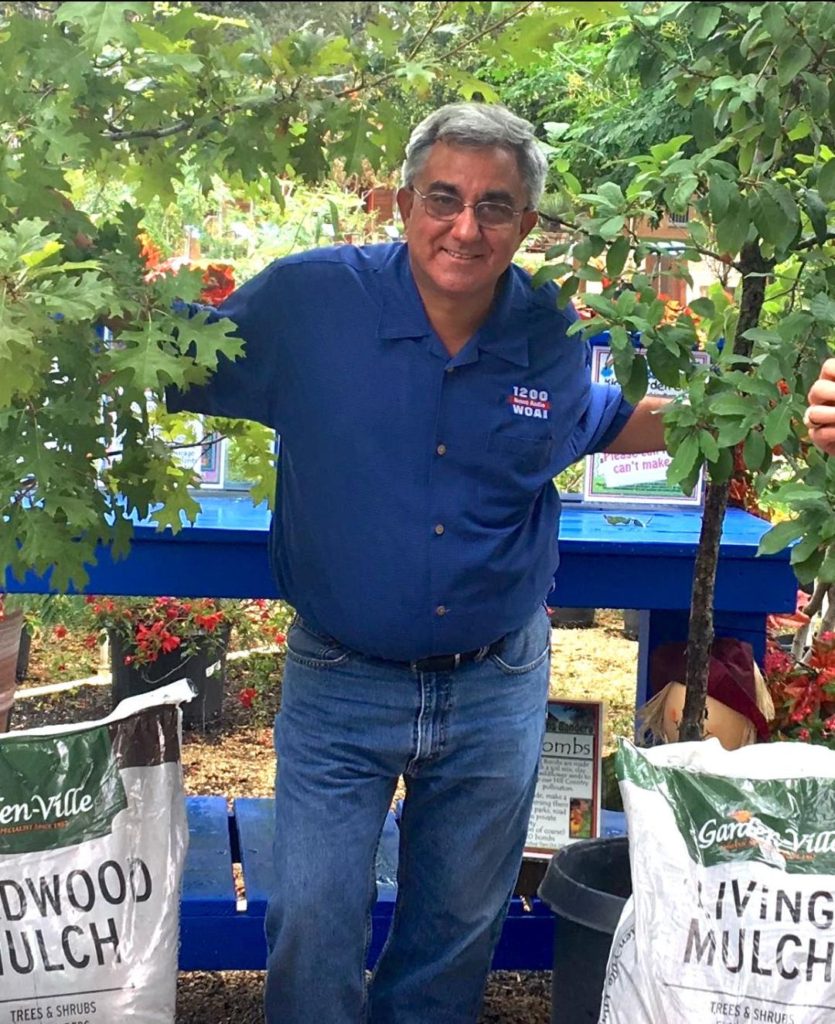


Welcome to a hot August! My name is John Vann and I serve as Vice President of the Bexar County Master Gardener Board. I have been a Master Gardener since 2014. I had the privilege to attend this year’s annual Texas Master Gardener Conference. I watched a presentation given by Brad Voss, Collin County Horticulture agent. His presentation was titled “Drought Proof Landscape.” Recent statistics indicate that 31% of Texas is in a drought, however Bexar County and the surrounding counties are in severe drought. (View our regions current drought monitor)
Our landscape is under significant stress and following these drought fighting points will help:
- Understanding your soil
- Selecting appropriate plants
- Watering Appropriately
Let’s look at a little more detail on each point.
1. Understanding your soil
Brad’s key point is “Healthy roots = Healthy plants”. He stressed that soil is not dirt. Soil is a dynamic natural medium that is living. He strongly suggested that we get a soil test which will enable us to understand how to increase soil health and will give a baseline of any nutrient deficiencies. He discussed the idea of improving our soil with organic matter called compost. Compost improves the water holding capacity of our soil which allows more water to reach the plant roots. The compost used should:
- Not have any large chunks of decomposed materials
- Be a dark color (almost black)
- Have an “earthy” smell (If it smells bad it probably has not been fully finished)
- Leave a thin film of humus if you hold it in your hands
Always use compost first then add shredded hardwood mulch to help around trees and shrubs. Shredded mulch is better because it will knit together. A 3-inch layer of mulch is ideal. Excessive mulch can result in too much water retained around your plants. Generally, 1 inch will decay every year and will provide nutrients to your plants. It is a long-term source of organic material. Add new mulch each year (or as needed) directly on top of the old mulch without mixing it in to allow the existing mulch to continue to decompose underneath. In addition to adding nutrients, mulch will reduce moisture loss and will lower soil temperature.
2. Selecting the right plants is critical. He stressed “right plant – right place” saves money and frustration
Brad’s key point on plants was to select plants that do well in our area. He stressed that consumers should read the plant tags and have a plan. Understand the plants’ requirements for sunlight, moisture and know the mature size. When possible, pick Texas Superstars which include native plants and adapted plants for South Texas. Brad also suggested that you “be mean” to your plants by not watering too frequently which will cause plants to grow deeper roots for survival. Watering too frequently leads to disease prone shallow rooted plants that may not survive periods of drought and heat.
3. Watering appropriately is critical to success.
Water when you need to but don’t overwater or flood your plants. Slowly add water when the top few inches are dry or when the moisture meter says dry. He stressed that plants are more tolerant of too little water than too much. Overwatering signs are often similar to drought stress. Use a moisture meter or long handled screwdriver to ensure that water is getting down to the roots of the plant and not just sitting on the surface.
Our turf grass is the biggest water consumer. Consider a “cycle and soak” method which is a technique that involves scheduling several shorter watering cycles in the same day allowing 20-30 minutes in between. This not only reduces run off but also allows time for water infiltration. Remember to fertilize appropriately, increase mowing height to shade the roots, and leave grass clippings.
The overall goal is a thriving landscape that needs minimal water.
In the Garden…with Bexar County Master Gardeners
Marsha Krassner, Principal Editor “In the Garden”


Hardberger Park Children’s Vegetable Garden: Reflections from a 55-Year-Old “Kid”
By Caroline Brooks, Bexar County Master Gardener Intern

AgriLife Learn-Texas A&M University)
Growing Eggplant in San Antonio
by Rebecca Mendez, Bexar County Master Gardener

(Photo by Sam Craft)
Up, Up, and Away: Vertical Gardening for Today’s Gardener
by Mim Shea, Bexar County Master Gardener Intern
BCMG News!

July Lunch and Learn Presents
RETHINKING WATER: FROM SOURCE TO SOIL – Presenter William “Bill” Swantner
Summary by Sherri McShane, Bexar County Master Gardener
Texas A&M AgrilLife Extension News!
Know when and how to water lawn, garden to beat the summer heat
Texas A&M AgriLife’s July gardening guide offers summer tips
After a brief rainy season, the state has been baking in a heat dome for much of the past month. The temperatures have been brutal for many Texas lawns and gardens, which are showing the stress of the summer heat and looking less-than-lovely in many parts of the state.

Don’t fall behind on harvesting fruit during the summer heat. (Texas A&M AgriLife photo by Laura McKenzie)
“The rain we did have helped vegetation and trees prosper, but they are now getting into a world of hurt,” said Larry Stein, Ph.D., Texas A&M AgriLife Extension Service horticulture specialist, Uvalde, and professor within the Department of Horticultural Sciences in the Texas A&M College of Agriculture and Life Sciences.
Stein said Texans need to keep some things in mind when watering during the hot summer months. Since plants can take intense heat and light if they have sufficient water, it is important to understand when to water, where to water and how much water to use…
Gardening Education Opportunities
The BCMG Calendar has many new and interesting programs open to the public. Click Here for this month’s offerings.

Online!
Fri-Sat, September 8-9, 2023
9 AM – 1:00 PM
Six (6) Different Gardening Sessions!
SAWS Customers can earn WaterSaver Reward points.
Join San Antonio Public Library and Bexar County Master Gardeners for “Dig it!”
Grow your mind as you hear from local experts on a variety of summer gardening topics and have an opportunity to ask questions. Let’s dig it!

Helpful Resources
Ask a Master Gardener
Lawn-care for August: Chinch bugs will make your lawn look moth eaten. The damage usually appears on the hottest part of the lawn. If your lawn has dried-out you will see similar symptoms. To figure out which problem you have, hand water the spots every day for two or three days. If the area does not green up, it is probably chinch bugs. Apply a soil insecticide specifically for Chinch bugs and ensure you follow the package instructions.
Answer by Art Vazquez, BCMG
Master Gardeners are available to help you with your gardening questions. We provide unbiased, research-based, locally relevant gardening information. Free service. You can reach us:
By phone: 210-631-0400 (Ask to speak to a Master Gardener)
Mon-Fri 9 am – Noon, 1-4 pm (Closed on county holidays)
The phones and the Hotline are being operated from Master Gardener home telephones; hotline calls are being directed by the AgriLife Extension receptionist.

WOAI Lawn and Garden Show
Call in to Live Radio on Saturday mornings, with your gardening questions for David.
Call in: 210-737-1200 or 1-800-383-9624 on Saturdays from 7 am to 10pm
Or just listen to the show, and learn from everyone else’s questions!
WOAI 1200 AM – Lawn and Garden Show
Host: David Rodriguez, Bexar County AgriLife Extension Horticulturist.
Past shows are archived here, for easy listening on your computer, tablet or phone, anytime! Listen on your phone while you drive!

Do you need help choosing plants for your landscaping needs?
Click here for options highly recommended by Texas A&M AgriLife
